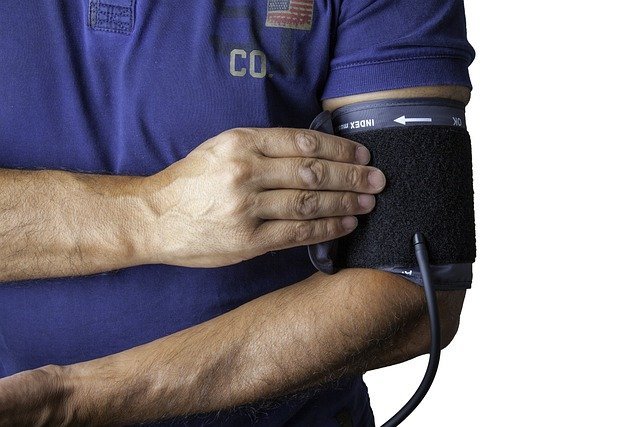What You Should Know About Home and Wrist Blood Pressure Monitors in 2025
Home and wrist blood pressure monitors are popular for convenience, but accuracy can vary based on multiple factors. Discover the facts behind monitor reliability, overlooked details in wrist readings, and what to check before buying for better health tracking in 2025.

How accurate are home blood pressure monitors really?
Home blood pressure monitors have come a long way in terms of accuracy. In 2025, many devices boast advanced technology that rivals clinical-grade equipment. However, it’s important to note that accuracy can vary depending on factors such as proper usage, calibration, and individual physiology.
Most high-quality home monitors now provide readings within 5 mmHg of those obtained by a healthcare professional. To ensure optimal accuracy, it’s recommended to choose a device that has been validated by recognized organizations such as the Association for the Advancement of Medical Instrumentation (AAMI) or the European Society of Hypertension (ESH)[1].
Surprising facts about wrist blood pressure monitor reliability
Wrist blood pressure monitors have gained popularity due to their compact size and ease of use. However, their reliability has been a subject of debate among healthcare professionals. In 2025, advancements in sensor technology and algorithms have significantly improved the accuracy of wrist monitors, but there are still some surprising facts to consider.
One notable development is the integration of position sensors in wrist monitors. These sensors ensure that the device is at heart level during measurement, addressing one of the primary concerns about wrist monitor accuracy. Additionally, some wrist monitors now use multiple measurement points to provide a more comprehensive reading[2].
Despite these improvements, it’s worth noting that wrist monitors may still be less accurate for individuals with certain medical conditions or those with larger arm circumferences. As such, upper arm monitors remain the gold standard for home blood pressure measurement.
What to check before buying a blood pressure monitor
When shopping for a blood pressure monitor in 2025, there are several key factors to consider:
-
Validation: Ensure the device is clinically validated by reputable organizations.
-
Cuff size: Choose a monitor with the appropriate cuff size for your arm circumference.
-
Memory and data storage: Look for devices with ample memory to track trends over time.
-
Connectivity: Many monitors now offer Bluetooth or Wi-Fi connectivity for easy data sharing with healthcare providers.
-
Additional features: Consider extras like irregular heartbeat detection or multi-user functionality.
-
Ease of use: Opt for a monitor with a user-friendly interface and clear display.
It’s also advisable to consult with your healthcare provider to determine which type of monitor is best suited for your individual needs[3].
Are your home blood pressure readings telling the full story?
While home blood pressure monitors provide valuable insights, it’s essential to understand that they only tell part of the story. In 2025, healthcare professionals emphasize the importance of contextualizing home readings with other factors.
For instance, time of day, recent physical activity, and stress levels can all impact blood pressure readings. Many advanced monitors now prompt users to input relevant information alongside their measurements, providing a more comprehensive picture of cardiovascular health.
Additionally, some devices incorporate artificial intelligence to analyze patterns and offer personalized insights. However, it’s crucial to remember that these features should complement, not replace, regular check-ups with healthcare professionals[4].
Important 2025 insights on using blood pressure monitors at home
As we navigate the landscape of home blood pressure monitoring in 2025, several key insights have emerged:
-
Consistency is key: Regular measurements at the same time each day provide the most reliable data.
-
Technique matters: Proper positioning and following device instructions are crucial for accurate readings.
-
Integration with wearables: Many blood pressure monitors now sync with smartwatches and fitness trackers for a holistic view of health.
-
Telehealth compatibility: Ensure your monitor can easily share data with telehealth platforms for remote consultations.
-
Environmental factors: New research highlights the impact of air quality and temperature on blood pressure, prompting some monitors to incorporate environmental sensors.
Comparison of top home blood pressure monitors in 2025
| Product Name | Type | Key Features | Cost Estimation |
|---|---|---|---|
| OmniCare Pro | Upper Arm | AI-powered insights, multi-user support, environmental sensors | $150 - $200 |
| WristGuard Elite | Wrist | Position correction technology, sleep BP monitoring | $100 - $150 |
| HeartTrack 360 | Upper Arm | 360-degree wrap cuff, voice-guided instructions, telehealth integration | $180 - $230 |
| PulseSync Mini | Wrist | Ultra-compact design, continuous monitoring capability | $120 - $170 |
| VitalSense Pro | Upper Arm | Dual-cuff comparison, stress level detection | $200 - $250 |
Prices, rates, or cost estimates mentioned in this article are based on the latest available information but may change over time. Independent research is advised before making financial decisions.
In conclusion, home and wrist blood pressure monitors have become invaluable tools for managing cardiovascular health in 2025. While technology continues to improve accuracy and reliability, it’s essential to choose a device that suits your individual needs and to use it in conjunction with professional medical advice. By understanding the capabilities and limitations of these devices, you can make the most of your home blood pressure monitoring routine and take proactive steps towards maintaining your health.
This article is for informational purposes only and should not be considered medical advice. Please consult a qualified healthcare professional for personalized guidance and treatment.




